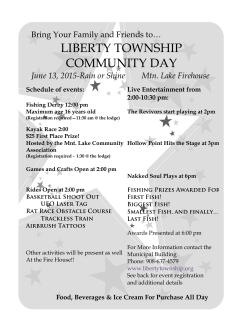
Read the full article
advertorial Exploring Fishing Safety and Extreme Weather R esearchers at Memorial University aim to add the voice and experience of fishermen to a new study on storm events and accidents at sea. Barbara Neis has been exploring fishing safety for 25 years as a professor in Memorial’s Sociology department, and as Barbara Neis former Co-Director of the SafetyNet Centre for Occupational Health and Safety Research. Her extensive research experience was what led PhD student James Shewmake to make the 5500 kilometre move from Fairbanks to St. John’s. “I worked with the industry in Alaska and studied fisheries in Mississippi as well. I was looking for a mentor who could help expand on research methods in fishers’ knowledge and local knowledge and I managed to find Barb,” says Shewmake. Their project will build on risk and climate research by colleagues in the Marine Environmental Observation Prediction and Response Network (MEOPAR), who found strong connections between rates of fishing-related search and rescue incidents and extreme weather patterns. Showing that connection is important, Neis explains, but understanding why it exists will help improve community and industry preparedness. “We don’t know a lot about the decision-making around storms and weather forecasting that might put people at risk,” says Neis. “We want to look at the decisions harvesters make from the point when they decide whether or not to go fishing, through their journey to their return from the fishing grounds.” www.thenavigatormagazine.com Convinced that storm patterns and severity are changing, Neis sees weather as the project’s anchor. “If you’re going any distance to fish, the weather forecast is probably going to change. So what forecasting resources do you have? How accurate are the forecasts, based on your experience? What is safe for this vessel and what isn’t safe? Have you made decisions based on the forecast, or do you feel you have to go out because it’s a competitive fishery, or because others control the quota?” After his cross-continent move, Shewmake is still getting his bearings in the North Atlantic. But you can hear his excitement to start asking these questions in Newfoundland’s fishing communities. He also hopes to go beyond interviews and get closer to the action. “I want to get out on the boats,” laughs Shewmake. “Fortunately James has fishing experience. We don’t think he’ll get too seasick, but we won’t be sending him out with the Cold Water Cowboys,” says Neis. The team will refine their goals this summer with input from fish harvesters’ associations and MEOPAR researchers. “We have the advantage of being in MEOPAR with this project,” says Neis. “Usually we would have interviews with fish harvesters, but we wouldn’t have the risk modeling and forecasting. We’re adding another piece. What I think is interesting from a policy perspective is how all the pieces fit together, what they tell us, and how we might use them to help improve decision making in the future.” Shewmake hopes to interview up to fifty fishermen, covering a variety of sectors, gear types, and regions. Each can provide crucial insights into the overall picture of health and safety at sea. “What’s an extreme event from their point of view? For an inshore lobster fisherman it’s going to be quite different than for a factory freezer trawler,” adds Neis. “It’s going to be an interesting conversation.” Vol. 18, No. 5 • May 2015 53
© Copyright 2025










